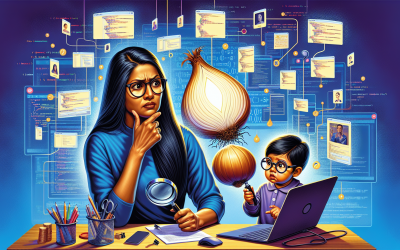Blog
How Valentina Tereshkova Debugged Space Exploration’s Gender Assumptions and Redefined the Final Frontier
Imagine being the first woman to launch into space, challenging decades-old assumptions about who belongs among the stars. Valentina Tereshkova’s 1963 mission wasn’t just a historic flight—it was a bold rewrite of the “code” that limited human potential. Discover how her courage and determination debugged gender stereotypes in space exploration, paving the way for future generations to reach beyond earthly boundaries. This story invites us all to question the assumptions in our own fields and consider what breakthroughs might be possible when fresh perspectives take flight.
Artemis and the Moon: How NASA’s Inclusive Space Mission is Coding a New Era of Exploration
Discover how NASA’s Artemis program is rewriting the script of space exploration by landing the first woman on the Moon and embracing diversity, international collaboration, and cutting-edge technology. This ambitious mission is not just about returning humans to the lunar surface—it’s a powerful example of intentional inclusivity and teamwork, offering valuable lessons for problem solvers everywhere. Learn how Artemis transforms space travel into a global, open-source adventure, setting the stage for humanity’s next giant leap to Mars and beyond.
How Board Games are Secret Programs: Coding Concepts You Play Without Realizing It
Ever thought the thick rulebook in your board game was like a foreign language? It’s more than that—it’s a program! Board games are cleverly designed as tiny computer systems, with inputs like dice rolls, game loops in turns, conditional logic in decisions, and visible “variables” like money and player positions. Discover how game designers code fun using human players as CPUs, how randomness builds excitement, and how “house rules” become real-time debugging. Dive into the fascinating world where programming meets play, and see your favorite games in a whole new light.
From Deep Blue to AlphaZero: Understanding the Two Paths of AI Intelligence and What They Mean for Our Future
Discover the fascinating evolution of artificial intelligence from Deep Blue, the chess-playing supercomputer of 1997, to AlphaZero, the self-learning AI that mastered multiple games without human guidance. This blog explores two fundamentally different AI approaches—hardcoded intelligence and learning intelligence—using relatable analogies like cooking and bike riding to explain their strengths and limitations. Learn how today’s AI systems combine these methods to create smart, adaptable technologies found in everything from voice assistants to medical diagnostics. Dive into the story of how machines have gone from calculating moves to understanding strategies, and consider how hybrid thinking can help solve complex problems in your own life.
How to Use the Five Whys Technique to Debug Code Like a Detective How to Debug Any Coding Problem with the Five Whys Technique: A Programmer’s Detective Tool
Discover how the “Five Whys” technique, originally developed by Toyota engineers, can help programmers solve tricky bugs by asking “Why?” repeatedly. This simple yet powerful method digs beneath surface problems to uncover root causes, improving debugging skills and preventing future issues. Learn how to think like a systems detective, slow down your problem-solving process, and gain deeper insights into your code—and even everyday challenges—by following this curious and systematic approach.
What Cybersecurity Can Learn from Magic: Unmasking Digital Deception and Protecting Your Online World
Discover how the captivating art of stage magic mirrors the tactics used by cyber criminals to deceive and exploit. This post unpacks the shared principles of attention management, expectation manipulation, and timing behind both magic tricks and cybersecurity threats. Learn how social engineering and phishing attacks work like digital illusions, exploiting human psychology and cognitive biases. By thinking like a skeptical audience and understanding these clever deceptions, you can build stronger defenses to protect your personal data and digital identity from online trickery.









